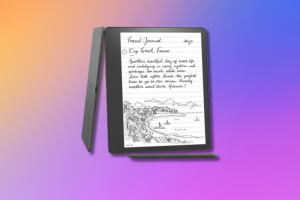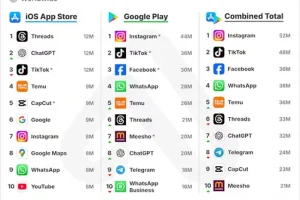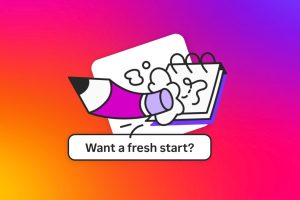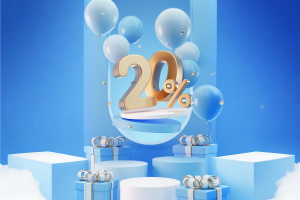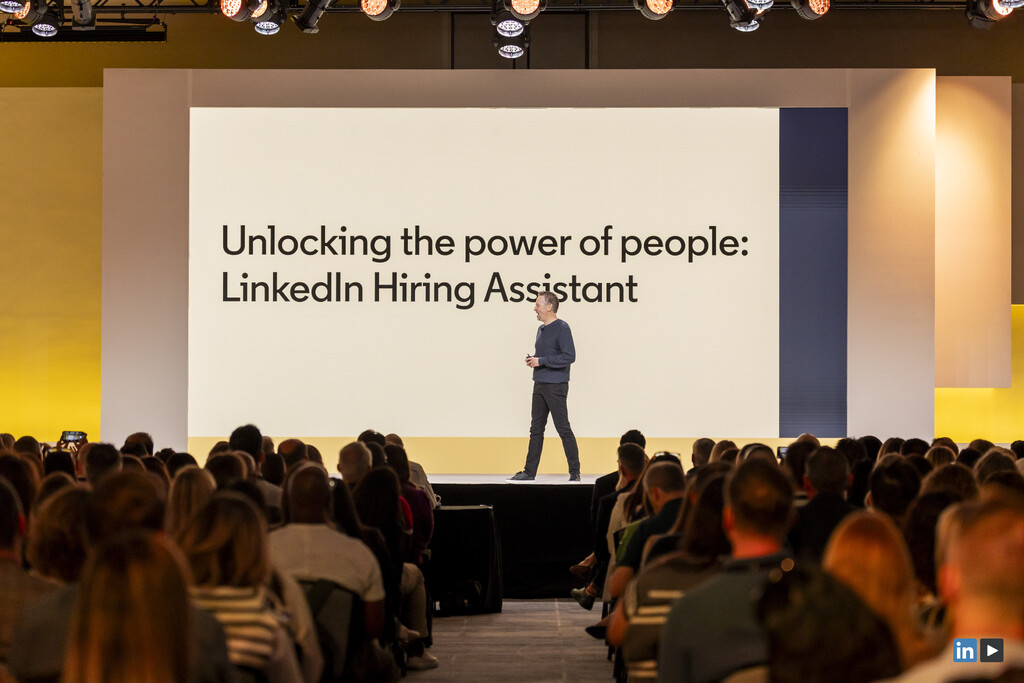AI is everywhere, and the applications for it are virtually endless. It has been deployed in everything from RoboBees, drones that can pollinate plants, to Flippy, a robotic burger flipper.
Yes, there is a lot of buzz and sizzle about AI. But there is also paradigm-shifting substance.
“The world of work is changing for every single person in ways we only see maybe once in a generation, maybe once in a century, maybe in ways we’ve never seen before,” LinkedIn CEO Ryan Roslansky told a Talent Connect Summit audience in Phoenix earlier today. “That’s the true potential of gen AI.
“It’s not just a moment where how we work gets redefined, it’s a moment where work itself gets redefined — for every person in every job in every company in every country.
“And that’s a big deal.”
LinkedIn announces the launch of Hiring Assistant, which will allow recruiters to focus on the parts of their job they love
The current upheaval is also a defining moment for LinkedIn, which is focused on helping companies thrive in this moment of upending change.
“That is LinkedIn’s job,” Ryan said, “to help you all do what you do best – build the most successful organizations in the world.”
To that end, Ryan announced the roll-out of the LinkedIn Hiring Assistant, which handles the repetitive, mundane parts of a recruiter’s job and frees them to focus on the parts that are more strategic, deliver more value, and feel more human.
Ryan noted three key advantages the company has that will help it deliver critical products such as Hiring Assistant for what he called “the next era of talent”:
- Access to the best AI technology in the world as part of Microsoft.
- LinkedIn’s Economic Graph, the best data set anywhere on the world’s professionals.
- Principles firmly in place to build the safest and most trusted AI technology.
Ryan then detailed how each of these advantages has been developed.
Advantage No. 1: Best-in-class technology
Microsoft began partnering with OpenAI in 2019. Ryan recalled a routine review meeting the executive team had with OpenAI when he realized that the world of work was going to change — dramatically.
“The OpenAI team unveiled their latest model,” Ryan recalled. “The results seemed too good to be true.
“So Bill Gates threw a challenge at it in real time, asking the OpenAI team to have their model take the AP Bio [Advanced Placement Biology] exam. Not only did it take it, it passed with flying colors. . . . And I knew that building software and products was never going to be the same again.”
Advantage No. 2: An unmatched data set on the world’s professionals
Data is the fuel that powers generative AI, enabling it to answer complex questions, to hold conversations with people, and to write, format, and edit stories.
“That’s where the Economic Graph comes in,” Ryan said.
The Economic Graph is the digital representation LinkedIn has of over 1.1 billion professionals, 68 million companies, 15 million jobs, 41K standardized skills, 134K schools at which to learn those skills, and over 19 billion posts.
“And it’s this stack,” Ryan said, “that we’ve started to build new features on top of that can only work on LinkedIn.”
Advantage No. 3: An extreme focus on building AI that is safe and trusted
Ryan noted that as part of its efforts to embed trust in its AI, LinkedIn has verified more than 55 million profiles.
“Our verification platform,” he said, “the largest of its kind, is going to be increasingly important as AI makes it easier for applicants to submit AI-generated resumes that can flood your ATS. I know these AI-generated applications are already creating challenges, and we are going to be able to help with that.”
LInkedIn is also looking outward in its efforts to build and maintain trust, especially by working with policymakers around the world as they develop guidelines on how AI is used for hiring.
LinkedIn is capitalizing on those three levers to create the products talent professionals need
Ryan noted some of the AI-driven products LinkedIn has released in the last couple of years — AI-powered job insights, AI-Powered Search, and AI-Powered Messages.
But Ryan was less interested in looking back than he was in looking forward.
Ryan noted that recruiters, everywhere, have parts of their jobs they absolutely love and parts they, well, could really do without. So, LinkedIn has developed the LinkedIn Hiring Assistant to deal with the more onerous parts of the job — such as intake, finding and evaluating candidates, outreach and screening.
That frees recruiters to focus on the parts of the job they love — talking to candidates and advising hiring managers. It allows them to be more strategic and to deliver more value and a better experience to both the job seekers they work with and the companies they work for.
LinkedIn’s own recruiting team has already started using Hiring Assistant.
“It has massively reduced the amount of time it’s taken them to go from an open req to a scheduled interview,” Ryan said, “and it’s going to be game-changing for all of you. You’ll be able to make more high quality hires faster, while increasing the happiness of your team.”
In addition to LinkedIn’s recruiting team, a number of charter customers are using Hiring Assistant already. It will become available to other LinkedIn customers over the coming year.
Final thoughts: Talent professionals are changing the world
A lot of the AI tools and features coming to the marketplace seem intent on creating a splash, on dazzling users, on shouting “Look at me, look at me!”
In short, they’re long on buzz and sizzle.
Not so with LinkedIn’s AI.
“Everyday,” Ryan said as he finished his keynote, “our goal is to help you all do what you do best with more of your day. Because what you do changes lives. It changes companies. It changes economies.
“It really does change the world.”


